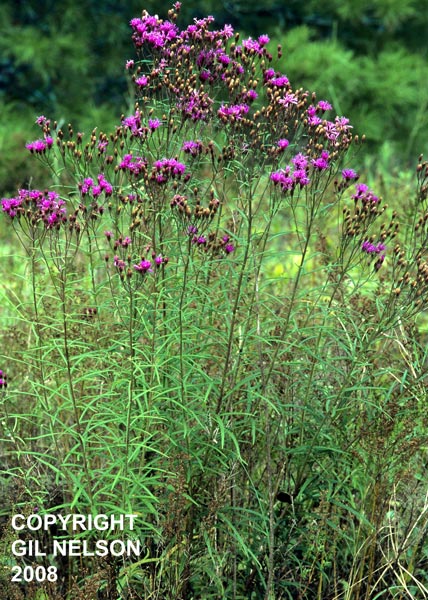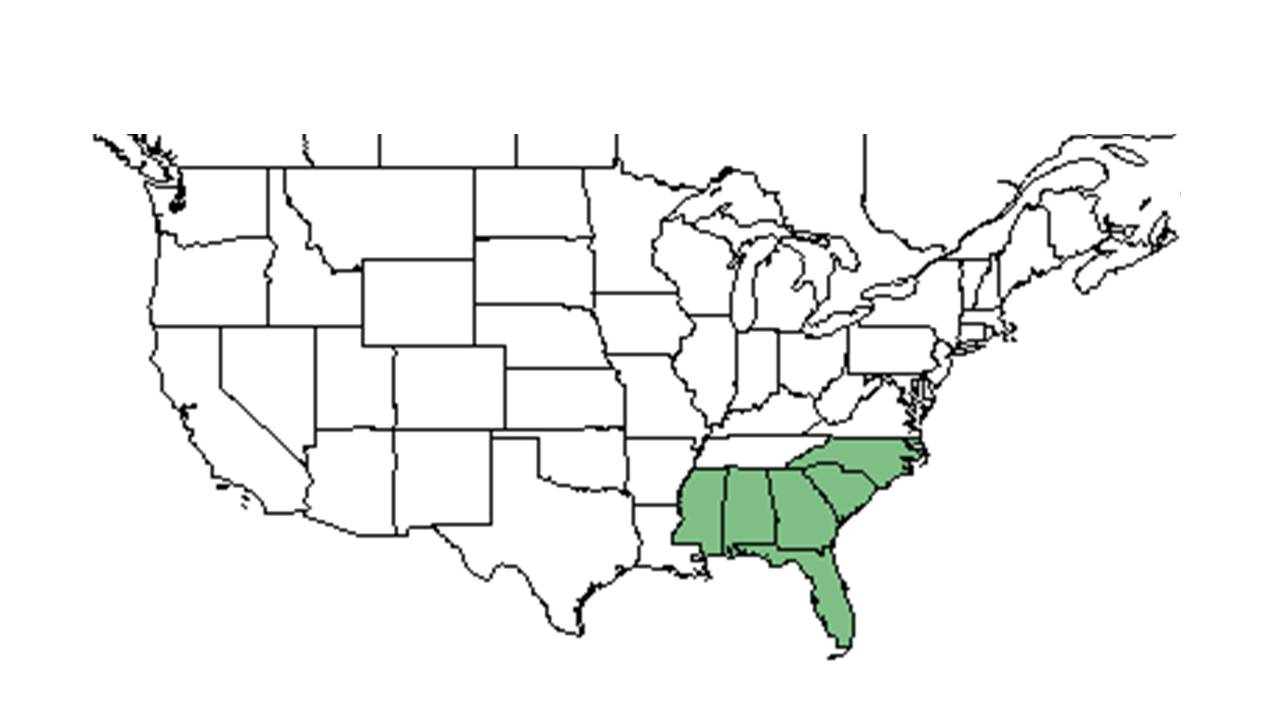Vernonia angustifolia
| Vernonia angustifolia | |
|---|---|

| |
| Photo taken by Gil Nelson | |
| Scientific classification | |
| Kingdom: | Plantae |
| Division: | Magnoliophyta – Flowering plants |
| Class: | Magnoliopsida – Dicotyledons |
| Order: | Asterales |
| Family: | Asteraceae ⁄ Compositae |
| Genus: | Vernonia |
| Species: | V. angustifolia |
| Binomial name | |
| Vernonia angustifolia Michx. | |

| |
| Natural range of Vernonia angustifolia from USDA NRCS Plants Database. | |
Contents
Description
Common name: tall ironweed
Distribution
Ecology
Habitat
V. angustifolia was found around 6.25% of the active gopher tortoise (Gopherus polyphemus) burrows observed by Birkhead and his team (Birkhead et al 2005). It can live in areas where dominant soils are Utisols (Coffey and Kirkman 2006). It can be found in pine savanna communities (Birkhead et al 2005). It is a common occurrence in longleaf pine communities (Coffey and Kirkman 2006; Brewer and Cralle 2003). It is also associated with sandhill communities (Heuberger et al 2003).
Phenology
It is a fall forb (Kirkman et al 2004). Showy-flowered sandhill species (Heuberger et al 2003).
Seed dispersal
It is dispersed by wind (Kirkman et al 2004).
Seed bank and germination
Less than 1% of V. angustifolia seeds remained viable after two years of burial by Coffey and Kirkman (2006). Thus, V. angustifolia doesn't have a short-term persistent soil seed bank and has little seed dormancy.
Fire ecology
It can live in areas frequently burned (Coffey and Kirkman 2006).
Pollination
Use by animals
Diseases and parasites
Conservation and Management
Cultivation and restoration
Photo Gallery
References and notes
Kirkman, L. K., K. L. Coffey, et al. (2004). "Ground cover recovery patterns and life-history traits: implications for restoration obstacles and opportunities in a species-rich savanna." Journal of Ecology 92: 409-421.
Coffey, K. L. and L. K. Kirkman (2006). "Seed germination strategies of species with restoration potential in a fire-maintained pine savanna." Natural Areas Journal 26: 289-299.
Birkhead, R. D., C. Guyer, et al. (2005). "Patterns of folivory and seed ingestion by gopher tortoises (Gopherus polyphemus) in a southeastern pine savanna." American Midland Naturalist 154: 143-151.
Heuberger, K. A. and F. E. Putz (2003). "Fire in the suburbs: ecological impacts of prescribed fire in small remnants of longleaf pine (Pinus palustris) sandhill." Restoration Ecology 11: 72-81.
Brewer, J. S. and S. P. Cralle (2003). "Phosphorus addition reduces invasion of a longleaf pine savanna (southeastern USA) by a non-indigenous grass (Imperata cylindrica)." Plant Ecology 167: 237-245.